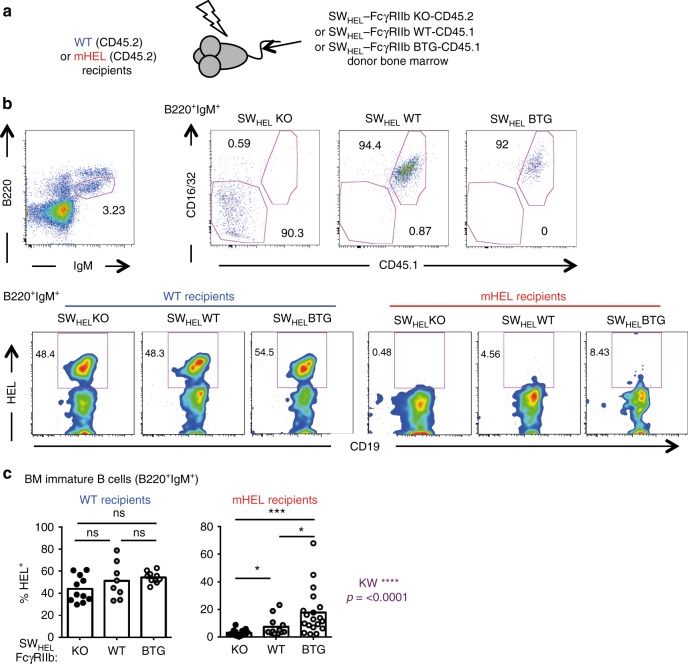Fig. 1.
Reduced FcγRIIb expression increases central tolerance. a Experimental procedure: wild-type and mHEL recipients (both CD45.2) were lethally irradiated and reconstituted with bone marrow from SWHEL-FcγRIIb KO-CD45.2, SWHEL-FcγRIIb WT-CD45.1 or SWHEL-FcγRIIb BTG-CD45.1 donor mice. b Representative flow plots of immature B cells in the bone marrow (B220+IgM+, left top panel). B cells originating from the donor bone marrow were identified based on FcγRIIb expression (detected with an anti-CD16/32 Ab) and expression of the congenic marker CD45.1 (right top panels). The frequency of HEL-specific cells for each condition is showed using the smoothing function to help the visualisation of rare events (bottom panels). c Quantification of the frequency of HEL-specific immature B cells in WT (left panel) and mHEL (right panel) recipient mice. mHEL recipients: n = 12–19 mice per group; wt recipients: n = 8–11 mice per group. The mean is represented and each dot corresponds to an individual mouse. Four pooled experiments are shown. The p-values were determined with the Kruskal–Wallis (KW) non-parametric test when comparing the three groups (KW: the p-value is indicated in purple for the mHEL recipient. All KW tests were not significant for WT recipients) and with the Mann–Whitney non-parametric test when two conditions were compared (indicated by black stars). *p < 0.05; **p < 0.01; ***p < 0.001. Comparisons generating non-significant p-values are indicated with “ns”. Source data are provided as a Source Data file

